Aviation analytics company Cirium has released on-time performance data by airline and airport for May. The most on-time airlines in the world last month were Aeromexico and LATAM.
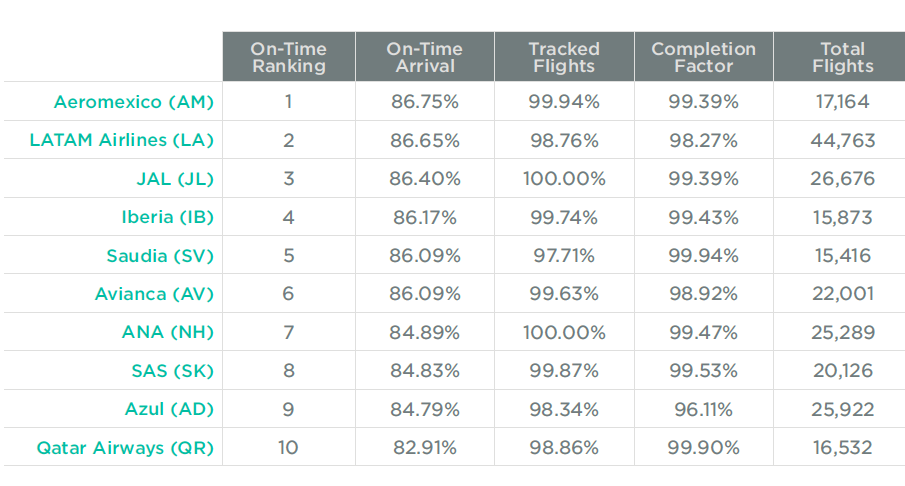
Credit: Cirium
Both Tokyo airports were among the world’s 10 most on-time in May. Fukuoka and Osaka Itami were also among the world’s most on-time. Japan Airlines was the third most on-time airline in the world in May, and ANA the third most on-time airline in Asia.
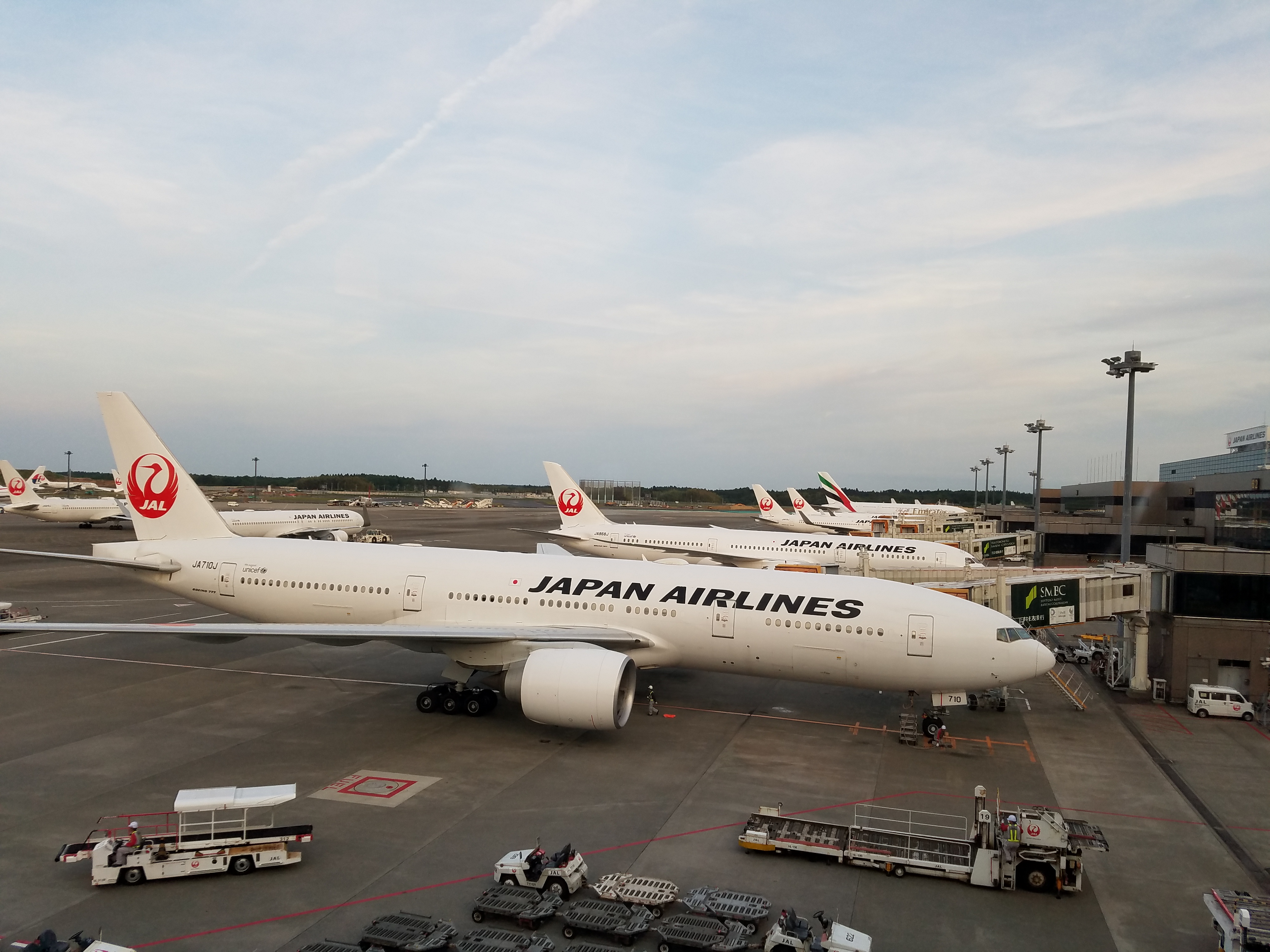
Japan Airlines at Tokyo Narita Airport
Three of the four U.S. airports in the on-time global top 20 were Delta hubs (Salt Lake City, Minneapolis, and Detroit). That not surprising – airport on-time performance is usually a function of weather and the airlines with the biggest operations out of each, although local conditions (like runway maintenance) can have an effect, too.
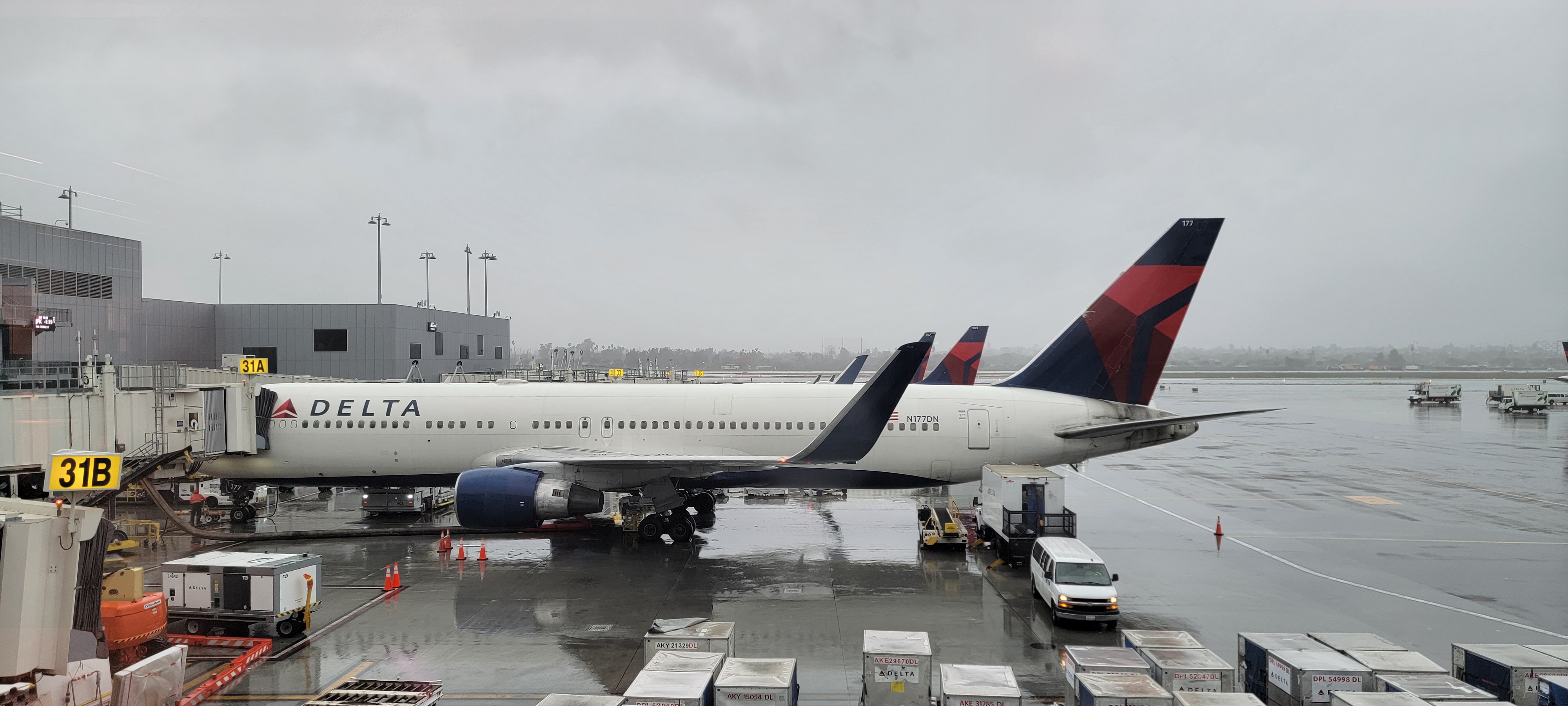
Delta Air Lines
In the U.S., Delta was the most on-time airline followed by Alaska. Only Frontier was less on-time than American Airlines, and American still cancelled a greater percentage of flights.
North Texas weather was a big problem at the end of May. American Airlines ran out of reserve crew at the end of the month. And it’s likely that many flight attendants were unwilling to work premium pay extra shifts because of ongoing contract negotiations.
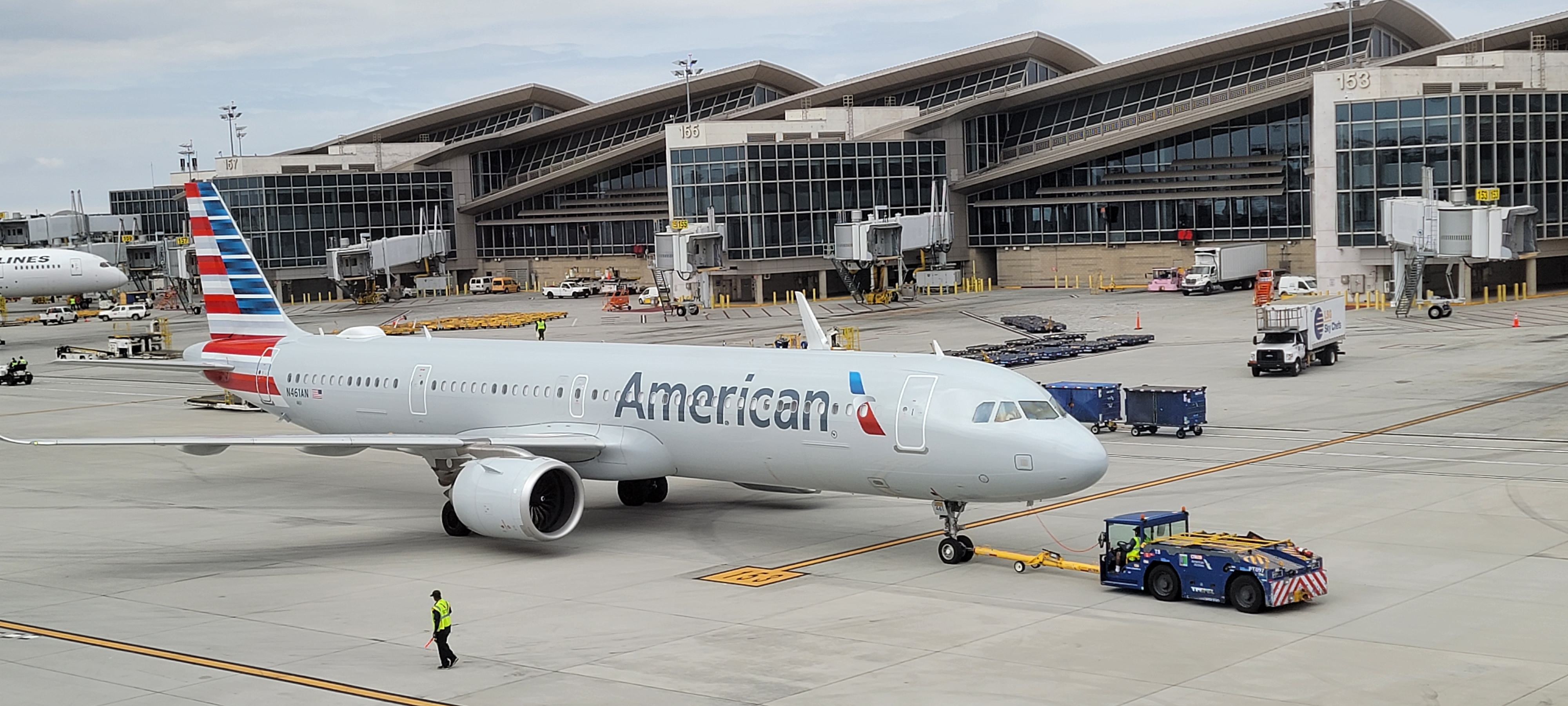
American Airlines
And while Southwest Airlines was similarly impacted by weather in May, they didn’t have nearly the cancellations that American did.
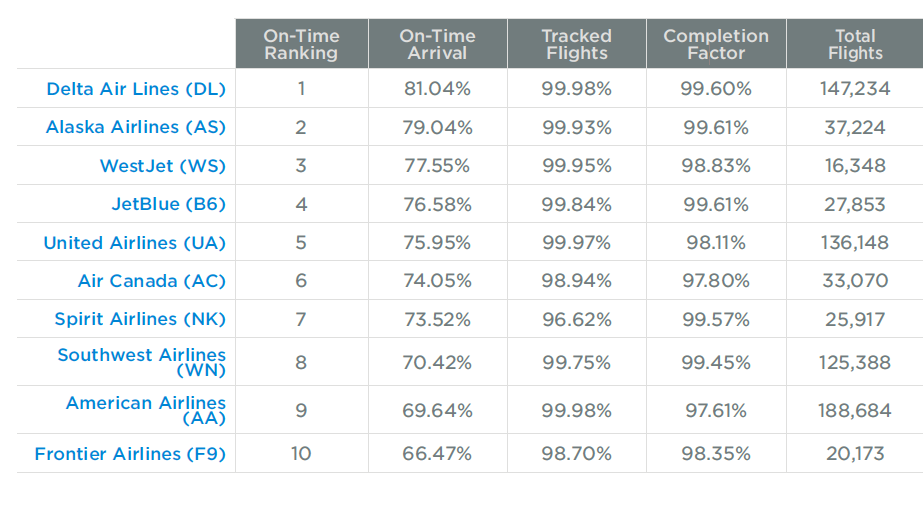
Credit: Cirium
Honolulu and Kona airports both performed well. Hawaii airports, and Hawaiian Airlines, both generally perform very well given Hawaii’s favorable weather conditions. Sacramento, San Jose, and Oakland were also standouts.
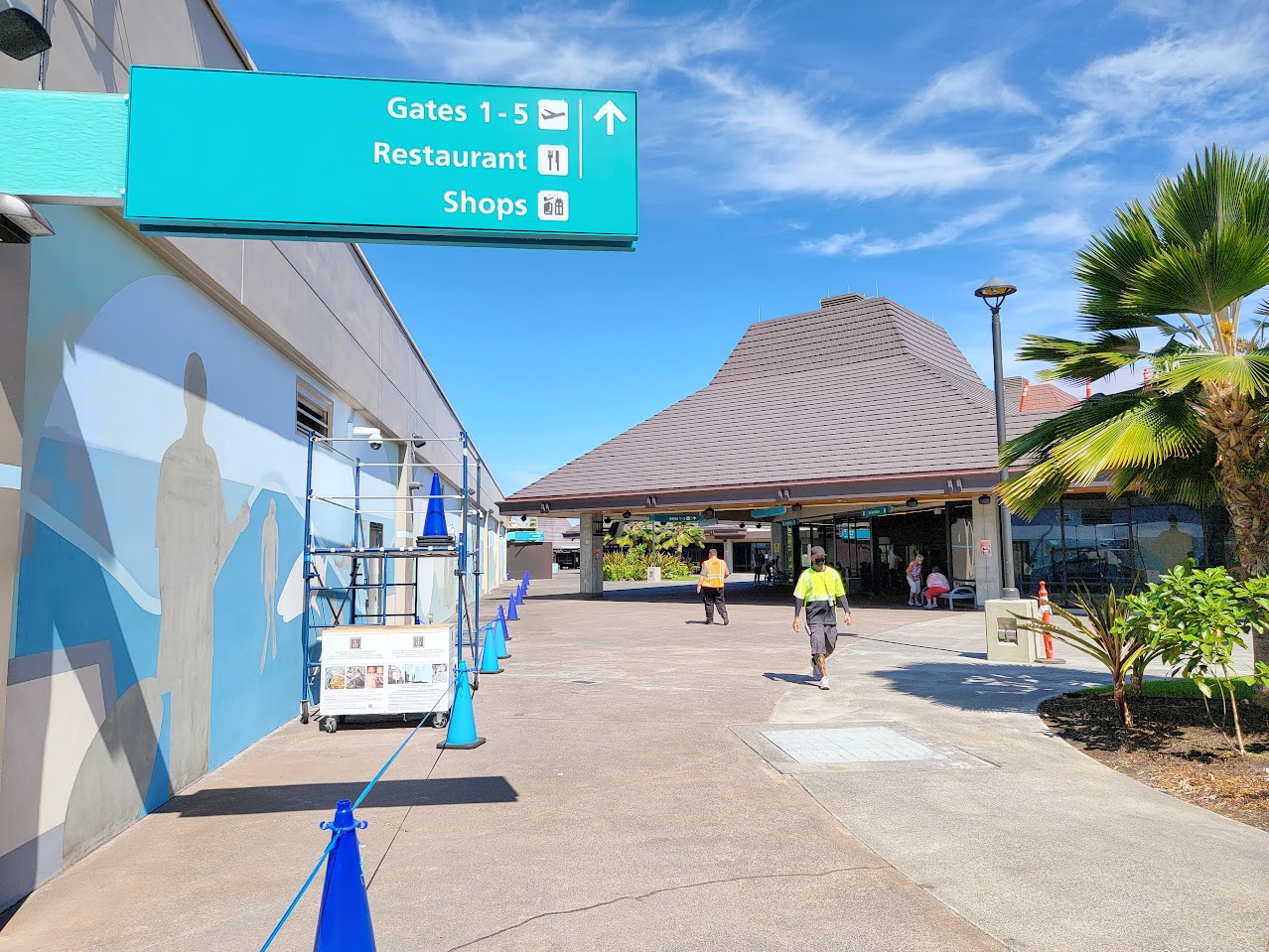
Kona Airport
Meanwhile, the best performances amongst European hubs were at Oslo, followed by Istanbul, Stockholm, and Copenhagen. Major Mideast hubs from Riyadh, Doha, and Abu Dhabi all did well.
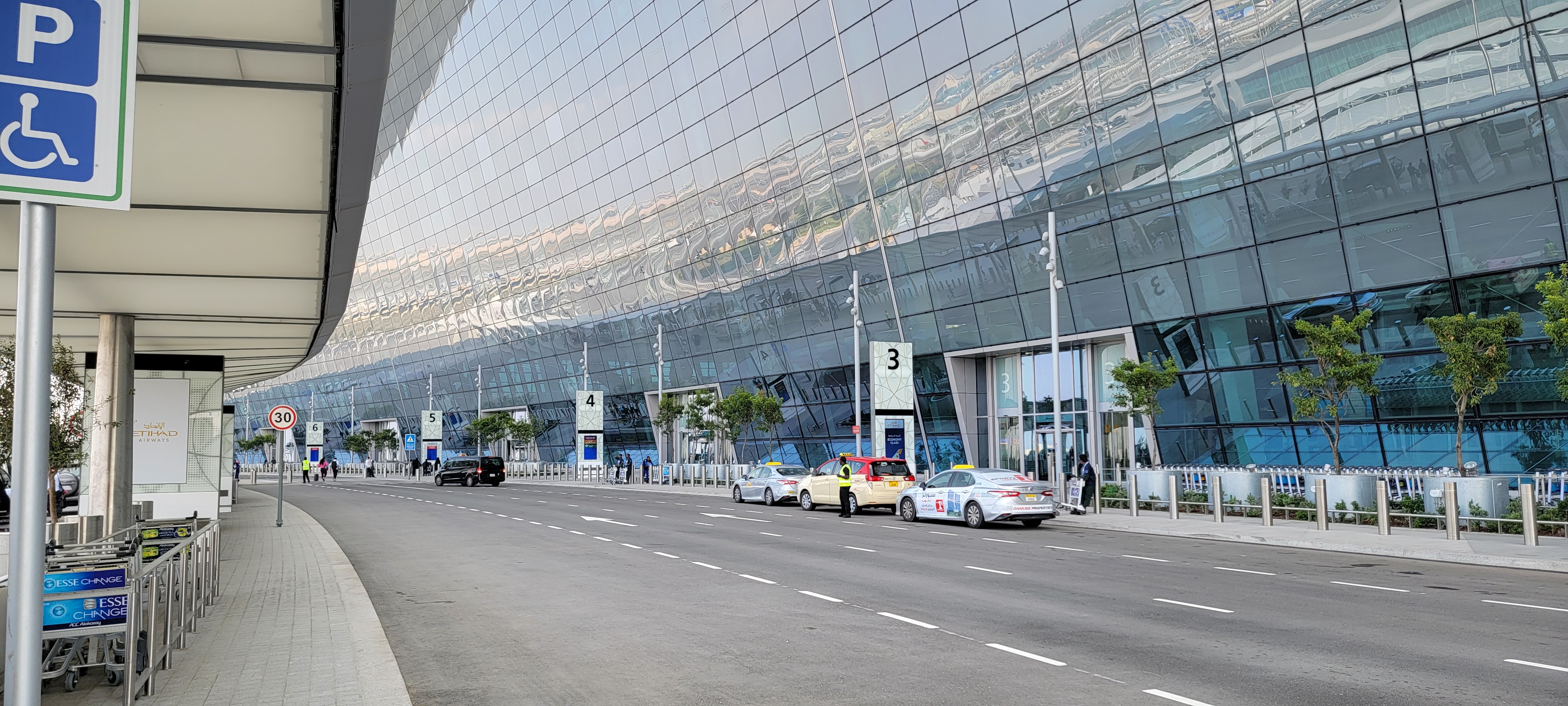
Abu Dhabi International Airport
May’s on-time performance data highlights the stark contrast between Delta’s operational efficiency and American Airlines’ struggles, influenced by adverse weather and crew shortages. Choosing an airline for reliability is a combination of the carrier’s track record, weather (which is, in part, seasonal by geography), and labor issues. Japan is a great place to connect right now, Hawaii is a great place to fly, and the Gulf carriers continue to operate well with the U.A.E.’s freak flooding behind it.


Much of this has to do with weather. I live in CLT and there have been a number of violent storms that shut down the airport recently (similar issue to DFW).
I’m sure when June results are released AA will be low again after the Miami flooding. Personally I couldn’t care less. 3 million miles on AA (and 2 plus on DL). I almost always get where I want on time. In bad weather all airlines are impacted and I accept that instead of whining
Aeromexico is the most on time airline in North America. World class compared to USA airlines..
I’m turgid.
It’s not just weather. Delta runs a better operation across the board, from how it monetizes opportunities to how it runs operationally. It is an arrogant company, with a far higher opinion of itself and its brand ethos than reality would have (a premium carrier it certainly is not). However, it has figured out how to run a money-losing business and run it fairly well.
American needs to break the mould of its corporate predecessors and be bold.
I’m an EP on AA and am beginning to be fed up with the delays, lack of comprehensive service in markets where I need to travel to/from, and so forth. What keeps me going is the benefits of the tier, and the accessibility of award travel and upgrades.
Why is weather vs not weather tracked? Yea I can fly to MIA be hit with a Hurricane then fly to BOS be hit with a Blizzard, is that AA’s fault? On time should be segregated by controllable and non-controllable. When MIA closes down because there is 6″ of water on the runway why is that AA DL WN’ fault? When Buffalo closes because there is 6 feet of snow (yes it does happen) why is AA flight there dinged.
How is this giving me a TRUE indicator of On Time when I am looking to book CLT to DEN and the rate is 80% due to weather and it is 99% non weather.
I do not think Alaska airlines gets hit with many Hurricanes nor does Aero Mexico get hit with any Blizzards but they all get hit with Mechanical and crew time outs.
And AA still operated 40,000 more flights than DL!!!!!!!!
Yes, which means that as a function of total operated flights, AA got more flights on time than any other US airline (69.64% on time * 188.684 flights = 131K flights on time vs. 119K for DL and 103K for UA)! 😉
@AC — you are correct. I’d guess that 90% of the delays on the major US airlines are weather related. I’ve seen zero evidence that AA’s “weather recovery response” is worse than its competitors. AA had bad luck with DFW weather last month and now has to deal with historic flooding in Miami. We have seen all the major airlines have labor-related delays over the years — and it’s possible that there were a few extra cancellations at DFW late last month due to flight attendant issues — but except in unusual circumstances, this is not a material cause of delays. Overall, the US airlines do a great job getting people where they need to go. Compared to most companies these days, their operations are notably efficient.
first, the DOT reports on-time by marketing carrier.
AA schedules more flights than DL but a much higher percentage of them operate on regional jets.
In 2023, DL operated more flights on its own metal than AA
AA regional on-time is better than AA more than 6% better than AA mainline.
and weather and other factors are part of calculating on-time. The DOT does provide reasons for the delays which are tracked.
and part of the reason why DL does well in on-time is because it controls a larger part of airspace in its hub cities than either AA or UA so can build schedules that work for good weather and for recovery. And DL pads its schedules more – which costs money in good weather – but also has more standby assets available
Add in that DFW is a sprawling operation which AA schedules w/ tight connections while AA is pushing way too much traffic through CLT compared to what it can handle and AA’s ability to bounce back is limited.
When you look at the mess in S. Florida this week and Texas in May, there is a disadvantage to carriers with large ops there. But if you are flying from, say, Ohio to San Juan, you care about the hub you fly through.
Reading this article gave my daddy such a raging clue!
All the hubs the commenters are complaining about are in red states. The red state governors’ tendencies towards lack of regulation creates the environment that contributes to delays in places like MIA and DFW.
There’s no reason DeSantis couldn’t have banmed rain like he did books or drag shows. And the bad weather in Dallas, Abbott could have chartered a plane and had that flown to Martha’s Vineyard instead to make it their problem.
The Northeast is a mess today. Not exactly politically ref